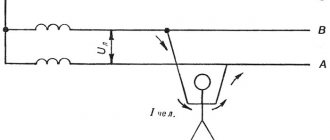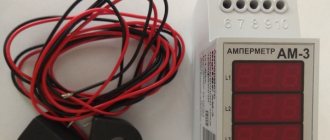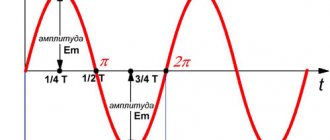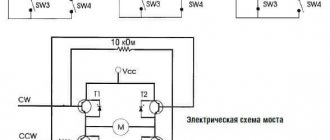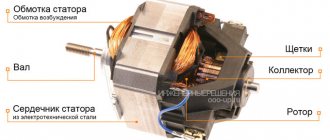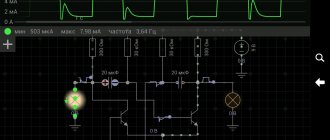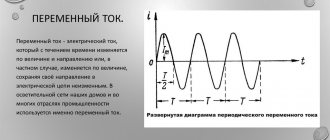Electric shock can have different consequences
The skin on the face, neck and back of the hands is most affected by the effects of electric current.
Note! Certain (acupuncture) points on a person’s ears and neck are extremely susceptible to electricity - if they are hit, even a weak current can kill the victim.
The passage of an electric charge through a person’s body leaves peculiar o’s on it, which are dead skin with a yellow coating, similar to calloused formations.
Electric current passing through the body leaves its marks
The most dangerous current is that which enters the areas of the back, hands, temporal and occipital parts of the head.
Routes along which direct current passes in the human body
The effect of electric current on the human body
The magnitude and type of current flow is the main factor on which the outcome of its effect on the human (or animal) body depends.
Expert opinion
It-Technology, Electrical power and electronics specialist
Ask questions to the “Specialist for modernization of energy generation systems”
Lethal current for humans We hope that the information received will move the reader to the right conclusions; he will not only unconditionally comply with all the safety requirements and recommendations set out in the instructions for electrical appliances, but will also teach, if necessary, force all his household members to follow them. Ask, I'm in touch!
What current values are deadly?
The depth and extent of electrical damage is influenced by three main factors:
What kind of lighting do you prefer?
Built-in Chandelier
According to the degree of influence on people’s health, the current is divided into:
- tangible - it only causes skin irritation to a person, a safe value is a current strength of up to 0.6 milliamps;
- non-releasing - alternating current, which, due to periodic impulses, causes a person to stick to the current source, this happens with a current strength of 0.025 amperes;
- fibrillation - causes fibrillation of internal organs, primarily the heart, which can lead to its stop; the strength of such a current exceeds 0.1 Ampere.
Electrical current greater than 0.1 ampere causes cardiac arrest
The body of any person resists electric current (described by Ohm’s law), its value depends on the general health of the victim at the time of the electrical injury, the degree of moisture, mental state and even the quality of shoes. Knowing the values of electrical resistance, the values of current voltage are displayed, which becomes dangerous to humans.
According to the canons of electrical safety technology, the following voltage values are considered dangerous to human life and health:
- 65 volts - for residential premises and public buildings with heating and internal humidity not exceeding 60 percent;
- 36 volts – for rooms with high humidity levels up to 75 percent (for example, basements, kitchens in canteens and restaurants, metro station lobbies);
- 12 volts – for very humid (up to 100 percent) spaces (swimming pools, baths, laundries, rooms with boilers).
Additional Information. As for the frequency of the current, its value in the range of 50-60 hertz poses a danger to life.
If the current exceeds 50 milliamps, great harm is caused to health, and at values above 100 milliamps, exposure to electricity even for a few seconds can kill a person.
What danger does high voltage pose to humans?
Even the smallest exposure to electric current on the human body can cause damage. It is necessary to take into account not only the fact of how strong the electric shock will be, but also how long it will act on the body. Dangerous stress for a person can even be minimal, since much still depends on the body itself. The current cannot be seen with your own eyes, determined by sound or smell; the effect begins when a person comes into contact with it.
Hazards of AC and DC Current
It is known that electric current can be constant or variable, but not every resident understands the difference between them and knows which has a more serious effect on the body. When asked which current is more dangerous, experts answer – alternating.
The biological effect of electricity directly depends on the intensity with which the body is exposed to it, and this is an important factor due to which fibrillation of the ventricles of the heart occurs. Lethal electric current for humans is prolonged contact with electrical conductors with a force of 0.25-80 mA. This causes spasms of the respiratory muscles and, as a result, acute asphyxia.
Electric current is dangerous for the human body, so basic safety requirements must be observed. It itself can be constant and variable, each affecting a person in its own way. Safe work with electrical installations - compliance with all rules and use of protective equipment.
Expert opinion
It-Technology, Electrical power and electronics specialist
Ask questions to the “Specialist for modernization of energy generation systems”
Duration of damaging effects On the body of each person there are areas that are most vulnerable to electric shock, as they have minimal skin resistance. Ask, I'm in touch!
Outcome from electric shock
In different situations, the outcome of electric shock was very diverse. However, the first thing that happens when receiving a strong electric shock is problems with breathing and blood circulation.
More severe cases are characterized by cardiac fibrillation (chaotic muscle twitching). In such a situation, prompt medical intervention is necessary, since in fact the heart ceases to function normally. According to statistics, people most often receive electric shocks with voltages up to 1000 V, while burns can occur if its strength exceeds 1 A.
The most common cause of electric shock is failure to follow safety regulations. In simple terms, the higher the voltage, the greater the distance from the human body to the current-carrying conductor for a spark discharge to occur. And the higher the current, the higher the damage it causes. During contact with a newly generated spark discharge, the skin tissue of the person in contact heats up. And to get a burn, a temperature of 60 degrees Celsius is enough, at which the protein begins to coagulate, and a burn appears on the affected tissue.
Electrical burns are difficult to treat and are therefore considered extremely dangerous.
Source pikabu.ru
What is more dangerous - alternating or direct current?
From all of the above, it becomes clear that alternating current is much more dangerous than direct current. Surely everyone knows about a unique experiment when Nikola Tesla passed a voltage of over 100 thousand volts through his body. So, it was direct current.
As for alternating current, it is much more dangerous than direct current, with a frequency of 10 Hz or more. Anything higher carries an even greater danger for humans. Moreover, direct current is several times safer than alternating current.
The danger also increases depending on the voltage. For example, alternating current with a voltage of up to 400 Volts is more dangerous than direct current with the same voltage. At the same time, with a voltage range from 400 to 600 Volts, both currents, both alternating and direct current, pose the same threat to humans.
Well, the last thing, perhaps the most important in all this, is the current strength. Much depends on the current strength. The safe current strength for humans at alternating voltage is considered to be a current value of 10 mA. At constant current 50 mA. Even comparing these indicators by amperage, it becomes clear that here, too, alternating current is much more dangerous than direct current.
Expert opinion
It-Technology, Electrical power and electronics specialist
Ask questions to the “Specialist for modernization of energy generation systems”
Variable In order for it to pass through the body, it needs an entry point, and then the current, passing through the entire body, has an irritating effect on it. Ask, I'm in touch!
Exam tickets to test the knowledge of welding specialists level 1
TICKET 7
QUESTION 1. For what purpose is one of the ends of the electrode uncoated?
1. In order to save coverage.
2. To determine the brand of electrode.
3. For current supply.
QUESTION 2. What steels belong to the group of silicon-manganese steels?
1. 15H2NMFA, 16GNMA, 20HMA.
2. 10ХСНД, 10ХН1М, 12МХ.
3. 15GS, 20GSL, 09G2S.
QUESTION 3. Indicate the letter designations of the type of electrode coating.
1. A - acidic, B - basic, C - cellulose, R - rutile, P - other types.
2. K - acidic, O - basic, OR - organic, RT - rutile, P - other types.
3. K – acidic, O – basic, C – cellulose, R – rutile, P – other types.
QUESTION 4. Based on what conditions are wires for electrical circuits selected?
1. Based on the permissible current density.
2. Based on the resistivity of the conductor.
3. Based on the required conductor length.
QUESTION 5. What are the requirements for the storage room for welding materials?
1. Welding materials are stored in a specially equipped room without restrictions on temperature and air humidity.
2. Welding materials are stored in a specially equipped room at positive air temperatures.
3. Welding materials are stored in a specially equipped room at a temperature not lower than 15 0C and a relative air humidity of not more than 50%.
QUESTION 6. For welding which group of steels are electrodes of types E-09M and E-09MX used?
1. For welding heat-resistant low-alloy steels.
2. For welding structural steels of increased and high strength.
3. For welding high-alloy steels.
QUESTION 7. What is the main role of gas-forming substances in the electrode coating?
1. Neutralize the harmful effects of sulfur and phosphorus in the weld metal.
2. Increase the ductility of the deposited metal.
3. Protect the molten metal of the weld from interaction with air.
QUESTION 8. How does welding current affect the size of the weld?
1. Increasing the welding current reduces the size of the weld and the heat-affected zone.
2. Increasing the welding current reduces the size of the seam and increases the heat-affected zone.
3. Increasing the welding current increases the depth of penetration and the width of the heat-affected zone.
QUESTION 9. Is preheating necessary when welding well-welded carbon steels with element thicknesses greater than 40 mm?
1. With permission from Gosgortekhnadzor.
2. Not needed.
3. Needed.
QUESTION 10. What is coated electrode arc welding?
1. A welding method in which an arc burns under a layer of molten slag.
2. A welding method in which the arc, coated electrode and weld are protected by shielding gases.
3. A welding method in which the melting of a metal rod, electrode coating and metal of the welded elements is carried out by a welding arc.
QUESTION 11. What current-voltage characteristic should current sources for manual arc welding have?
1. Increasing.
2. Rigid or gently falling.
3. Steeply falling.
QUESTION 12. Indicate how an increase in arc voltage affects the geometric dimensions of the weld
1. The seam width increases.
2. Has no influence.
3. The penetration depth increases.
QUESTION 13. What is monitored during visual inspection?
1. Pores, non-metallic inclusions.
2. Internal cracks, lack of fusion.
3. Shape and size of the seam, surface cracks and pores, undercuts.
QUESTION 14. Do the type and polarity of the current affect the amount of penetration during RDS?
1. No effect.
2. It has a significant impact.
3. Has little effect.
QUESTION 15. How does the volume of metal deposited in a groove in one pass affect the amount of deformation of welded joints?
1. Increases deformation with increasing volume.
2. Reduces deformation with increasing volume.
3. No effect
QUESTION 16. How to fix seams with lack of root penetration?
1. Metal sampling from the root side of the weld with mechanical stripping and subsequent welding.
2. The defective area is not removed, but corrected by welding.
3. Sampling of the defective area from the side of the root of the seam using a mechanical method without subsequent welding.
QUESTION 17. What defects can result from welding during installation without protecting the welding site from the wind?
1. To the appearance of slag inclusions.
2. To the appearance of porosity.
3. To the appearance of lack of penetration.
QUESTION 18. What voltage is considered safe in damp areas?
1. Below 48 V.
2. Below 36 V.
3. Below 12V.
QUESTION 19. What does the number following the triangle indicate in the symbol for welds in the drawings?
1. On the size of the fillet weld leg.
2. On the thickness of the parts being welded.
3. On the welding method.
QUESTION 20. For what purpose is a light filter installed in a welding helmet?
1. To protect the welder's eyes from harmful ultraviolet radiation when observing welding.
2. To protect the welder’s face from splashes of molten metal.
3. In order to provide better observation of metal melting.
To go to the next page, use the page navigation below
Pages: 7
Which current is more dangerous?
Alternating current flows in outlets and junction boxes, making its dangers more pressing
Until now, the laws of the effects of electricity on the human body have been little studied. The nature and severity of the lesion is influenced by many factors, the most significant of which are:
- Voltage. In the range from zero to 400 V, alternating current is considered more dangerous. At around 500 V, both types of current have equal destructive power, and at a voltage of 600 V and above, direct current turns into its worst enemy. That is, at high voltage, alternating current is less dangerous than direct current.
- Frequency (for alternating current). Current with a frequency of up to 500 Hz is considered relatively safe, as is current with a frequency of over 1 thousand Hz. The most dangerous values are 600–900 Hz.
- Current strength. Serious injuries to the body can be caused by an alternating current of 20 mA or higher, as well as a direct current of at least 100 mA. With equal current strength, alternating current is more dangerous.
- Impact area. Lesions of the extremities are not as dangerous as lesions of the torso and head.
There are four degrees of severity for electric shock:
- The first is characterized exclusively by convulsive muscle contractions.
- On the second, loss of consciousness is added.
- The third stage leads to disturbances in the functioning of the heart and respiratory system.
- The fourth is clinical death.
Any stage may be accompanied by more or less severe burns.
Be attentive and careful, monitor the serviceability of electrical appliances, follow safety rules, and then you will not be exposed to electric shock.
Expert opinion
It-Technology, Electrical power and electronics specialist
Ask questions to the “Specialist for modernization of energy generation systems”
Misconceptions about electricity The reason for this is that the electric current will pass along the path with the least resistance, that is, along the shortest line that connects the phase wire to ground or neutral. Ask, I'm in touch!
Classification of special danger premises
- excessive air humidity, which reaches 100%, which causes condensation to form in the room;
- the presence in the room of chemical aerosols that conduct current, as well as vapors, liquids and gases, which gradually destroy the insulation and conductive parts of electrical equipment.
- Use protective barriers around electrical hazardous areas. Such protection will help to avoid close contact with live objects and, as a result, protect against electric shock.
- Using an interlock will help avoid an accident if current access is limited due to equipment malfunction.
- To avoid emergency situations, use portable grounding conductors, especially if work is carried out in open areas where there is direct contact with the ground. The ground electrode will direct electricity, in the event of a high voltage situation, to the ground.
- Observe technical safety measures using protective insulation (rubber mats, etc.).
Useful tips Connection diagrams Principles of operation of devices Main concepts Meters from Energomer Precautions Incandescent lamps Video instructions for the master Testing with a multimeter
What is voltage short answer?
Electrical voltage refers to the work done by an electric field to move a charge of 1 C (coulomb) from one point of a conductor to another.
Interesting materials:
Why do tomatoes have light green leaves? Why do the leaves of a flower dry out? Why do the leaves of the Spathiphyllum flower curl? Why do the tips of the leaves of flowers turn black? Why do flower leaf tips turn yellow? Why do thuja leaves turn yellow? Why do verbena leaves turn yellow? Why do grape leaves turn white? Why do honeysuckle leaves dry out? Why do the leaves turn yellow in August?
